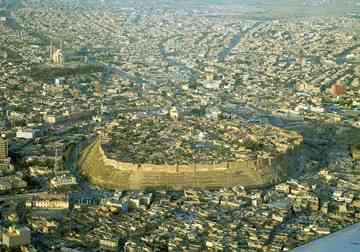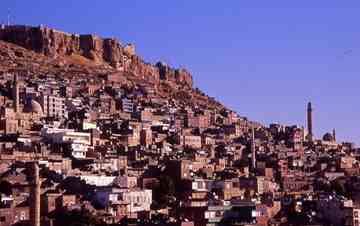Koya city is located in the eastern part of Erbil city, the capital of Kurdistan Region. It is surrounded by Haibat Sultan, Sari Kosar and Bawaji mountains from the north and northeast.
 There are more than 65 ancient sites in Koya, some of which are tourist attractions. Archaeological excavations revealed that inhabitants settled in Koya 2,000 years B.C., and ancient places like Koya's famous mosque and Qaisaris (similar to ancient markets) bear archaeological clues to Koya's ancient past.
There are more than 65 ancient sites in Koya, some of which are tourist attractions. Archaeological excavations revealed that inhabitants settled in Koya 2,000 years B.C., and ancient places like Koya's famous mosque and Qaisaris (similar to ancient markets) bear archaeological clues to Koya's ancient past.
Qishlay Koya (Koya Qishla), located west of Koya, is 2,400 square meters. It resembles a castle from the outside, and a hall, room and corridor are visible from the inside yard.
Parts of Qishla have been reconstructed, but one part remains in ruins. There is an art gallery inside Qishla that is popular with tourists looking for mementos.
 Another historic site in Koya--Mahmud Agha Karwansara (a place often visited)--is located in the center of the city. Karwansara is two floors and 1,000 square meters.
Another historic site in Koya--Mahmud Agha Karwansara (a place often visited)--is located in the center of the city. Karwansara is two floors and 1,000 square meters.
One big gate leads people to the inside of the building, and the first floor was used as cottages where horses and mules were kept. The second floor offered services similar to today's hotels. Some parts lay in ruins.
The old historic Koya Qaisari, known as Haji Bakir Agha Qaisari, is near Koya Karwansara and was constructed in 1840. Qaisari resembled today's city center markets and supermarkets.
It consists of about 40 stores and shops opposite each other, with arch-shaped ceilings. The second Qaisari, next to the other, was constructed in 1905. The Qaisaris are now only historical places.
Among the former mentioned sites is Dashti Koya Qaisari, six kilometers east of Koya. It is desolate and inside a small valley, and consists of several stores that were strangely constructed. Other historical spots in Koya include mills and the Big Mosque, to name just a few.
Author: Nadir Rosti | Source: The Kurdish Globe [December 25, 2010]